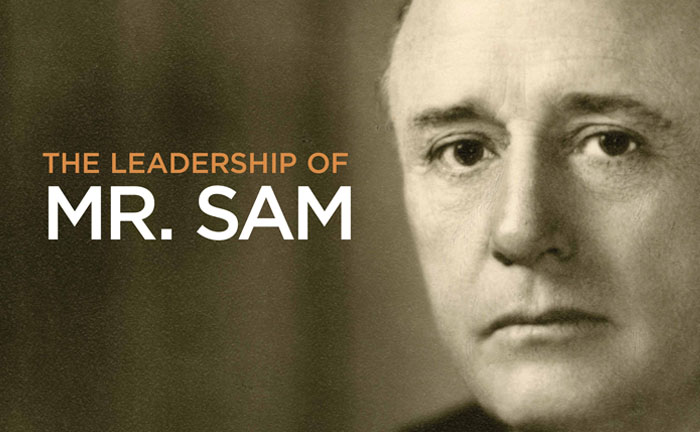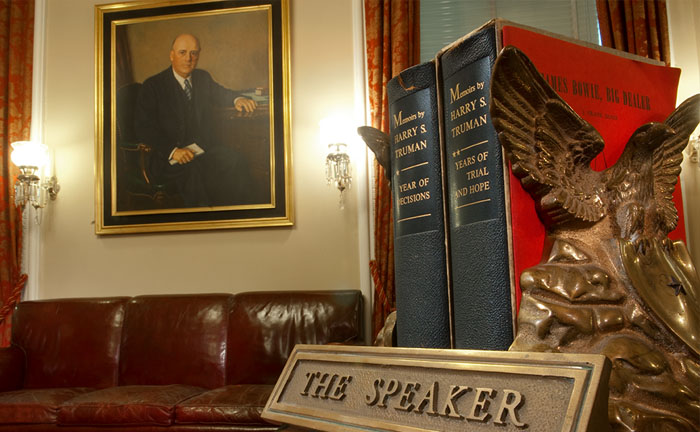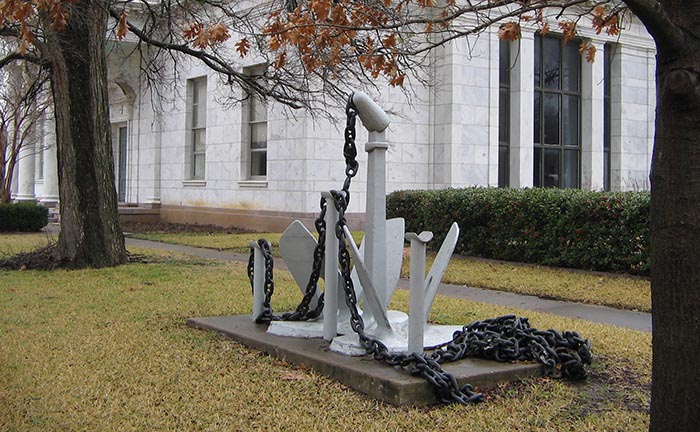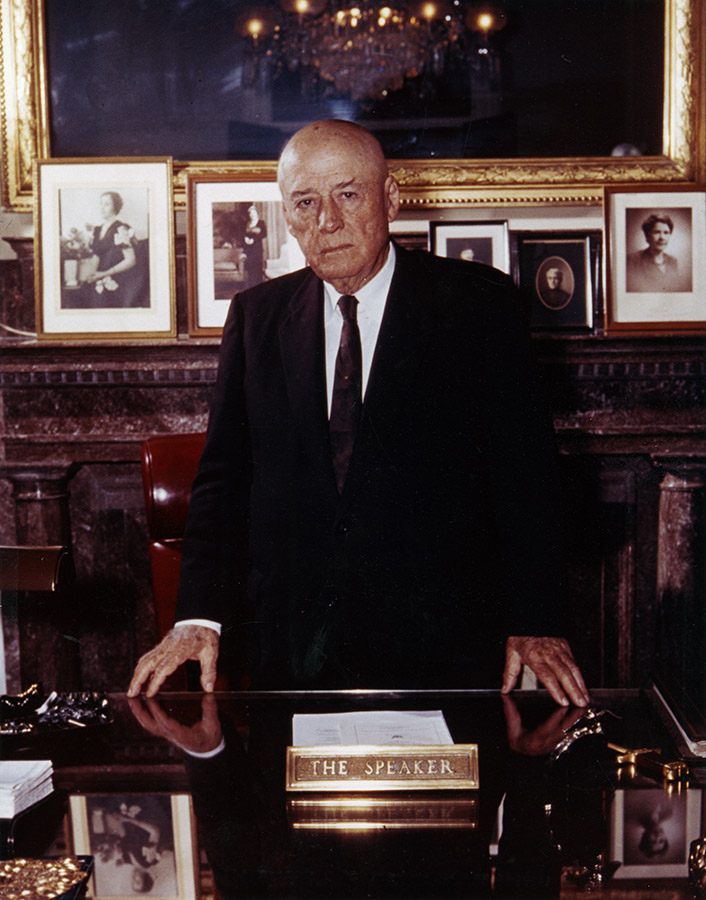
Sam Rayburn (1882–1961) served as congressman for 48 years. Rayburn participated in the passage of most of the significant legislation in the first half of the twentieth century. In 1940, Rayburn became Speaker of the House of Representatives, a position he held longer than any other individual in history. As Speaker, Rayburn was a key player in our national history, especially during World War II. One of his landmark achievements was passage of the GI Bill in 1944, which helped to finance college educations for thousands of returning service men and women.
Early life
Samuel Taliaferro Rayburn was born on January 6, 1882, in a rural area of Roane County, Tennessee. At age five, Rayburn, along with his parents and nine siblings, moved to a forty-acre cotton farm in Flag Springs, Texas. One more child was born after the move to Texas, and every member of the family had to do their share to make the farm profitable.
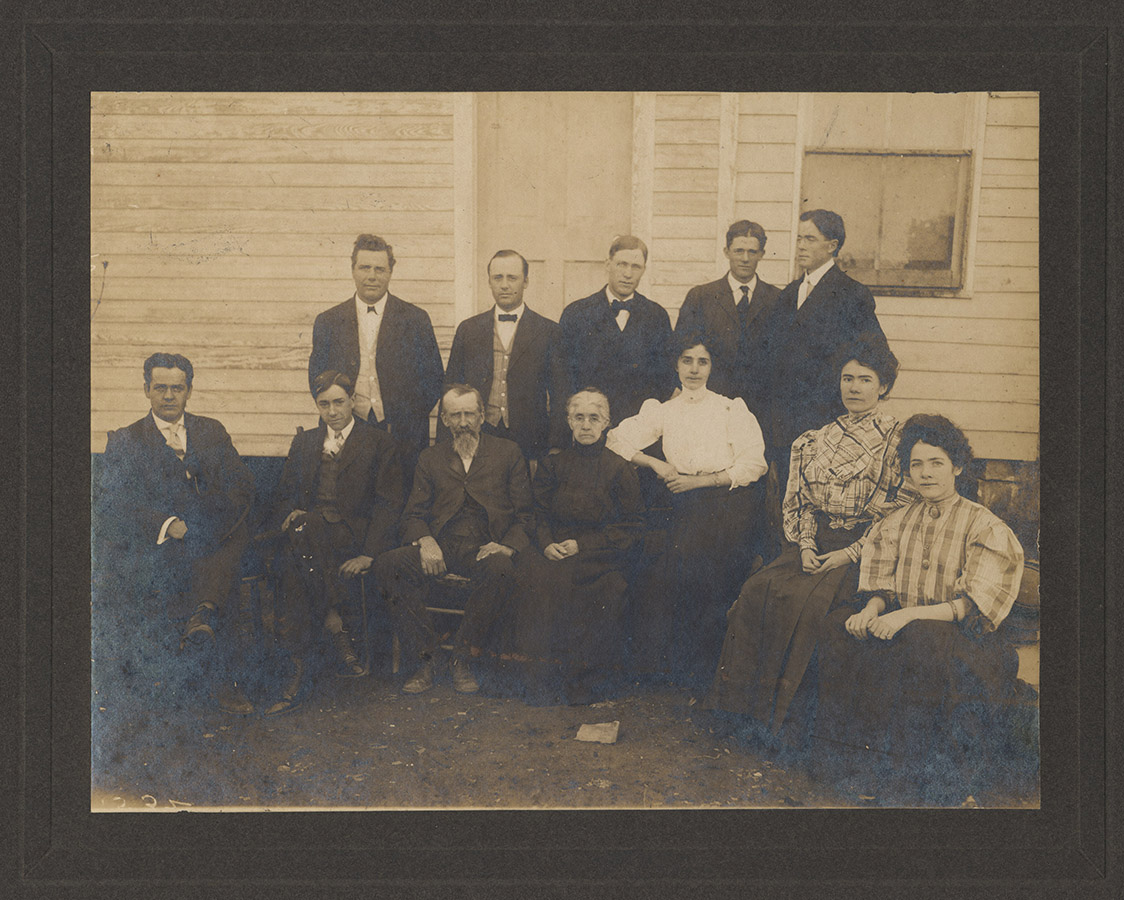
Rayburn’s interest in government began after hearing his congressman, Joseph W. Bailey, speak at a rally in Bonham, and it has been suggested that his interest intensified due to the “great golden age of Texas politics.” As he worked the cotton fields, Rayburn imagined himself making numerous political speeches and engaging in debates with current political leaders. Later in his life, Rayburn recalled that it was during one of these flights of imagination that he decided he would pursue a career in law and politics. Although he was quite young, only eight years old, Rayburn remembers, “After I made that decision, it was settled. I never worried a minute after that about what I ought to do or was going to do.”
Rayburn received his bachelor’s degree in 1903 from East Texas Normal College (now Texas A&M University–Commerce).
In office (1906–1961)
In 1906, Sam Rayburn won a seat in the Texas House of Representatives, where he served as Representative of the Ninth District.
During his term of service in Austin, Sam Rayburn attended classes at The University of Texas at Austin, and in 1908, he passed the Texas bar examination.
Rayburn was re-elected for two more terms. In 1912, during his third term in the Texas House, he was elected Speaker of the House. That same year, he was elected to serve as a Democratic Representative to the United States House of Representatives. This election began a 48 year career of continuous service in Washington, D.C.
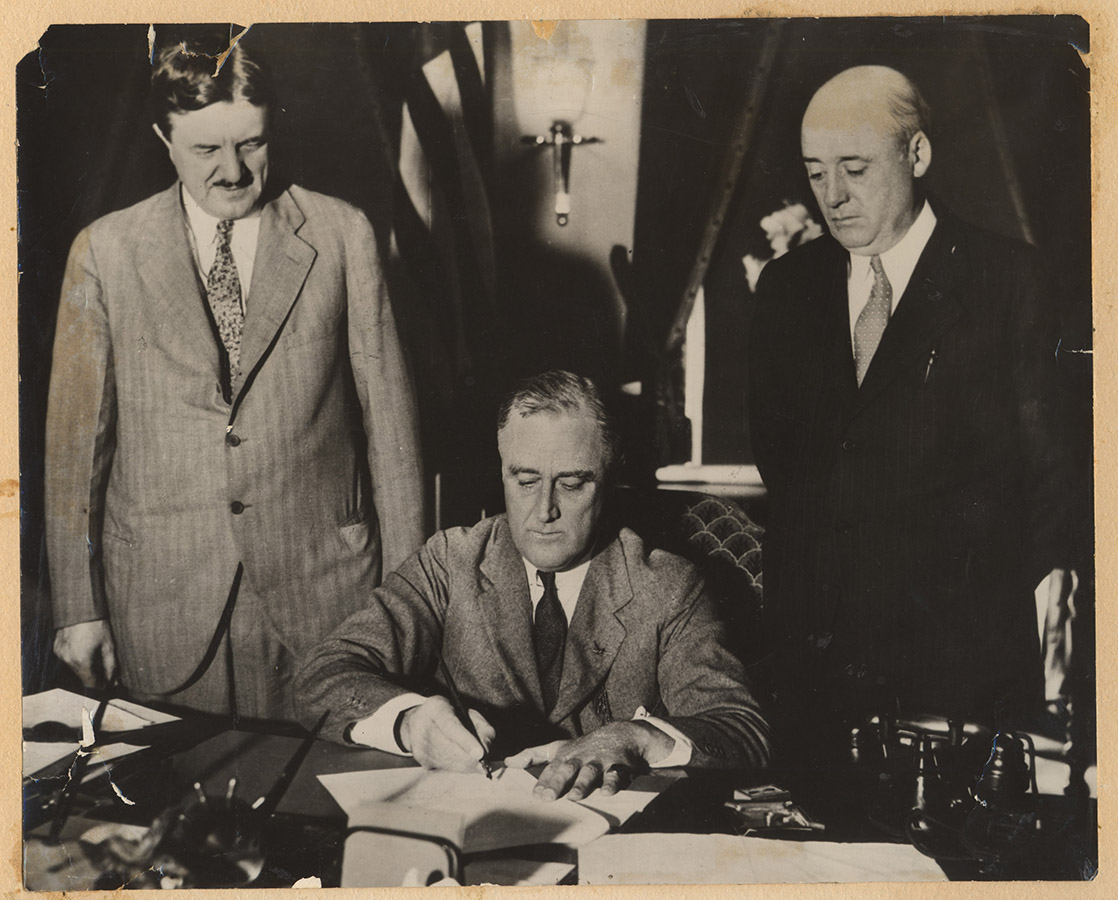
Between 1931 and 1937, he served as chairman of the Interstate and Foreign Commerce Committee. Rayburn supported the majority of New Deal legislation proposed by the Roosevelt administration from 1933 to 1936. As chairman, Rayburn was instrumental in the passage of the Truth in Securities Act, which established the Securities and Exchange Commission. Rayburn participated in the creation of the Federal Communications Commission, as well as the passage of the Public Utilities Holding Company Act, and the Emergency Railroad Transportation Act. Of particular importance to Rayburn was his work with Senator George W. Norris in sponsoring the Rural Electrification Act. The REA was designed to benefit largely rural areas populated primarily by farms by providing funding and organization of electric cooperatives in these areas. Rayburn’s own experience coming from a rural area and working a farm without electricity offered him a personal understanding how the passage of the REA could improve rural communities.
Congressman Rayburn was elected majority leader of the 75th Congress in 1937. In 1940, Rayburn was selected to replace the deceased William Bankhead as Speaker of the House, a position he held for a record number 17 years. He also served as minority leader during the 80th and 83rd Congresses, the two periods of Republican majorities in the House of Representatives.
Rayburn served with eight different presidents and helped to pass several pieces of key legislation throughout his career, including the extension of the Selective Service Act in 1941. Rayburn was Speaker during World War II and was instrumental in garnering support to fund the Manhattan Project.
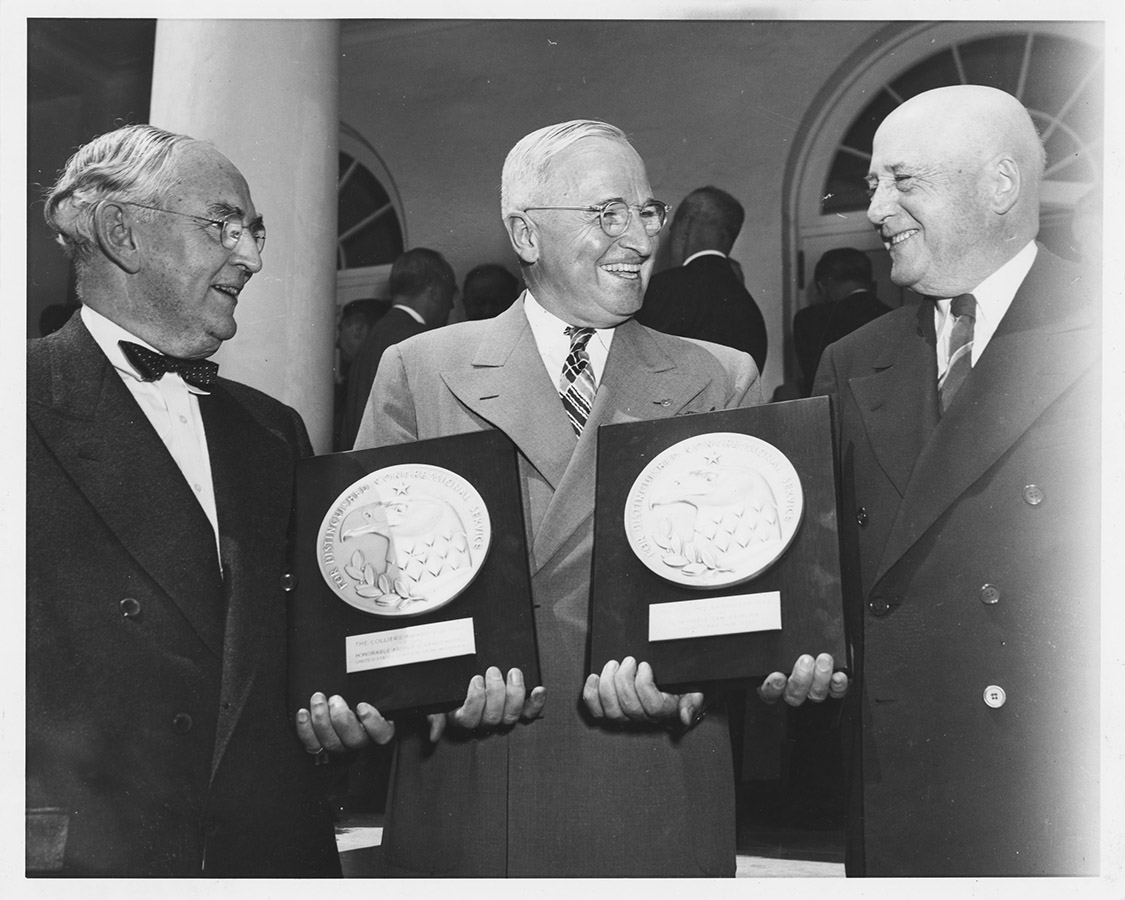
In 1948, Collier’s magazine recognized Rayburn for his outstanding congressional service to the country, honoring him with a $10,000 award. He used this award as seed money to establish the Sam Rayburn Library and Museum.
Twelve years later, Rayburn was presented with the Cordell Hull Award in recognition of his “long vigilance over foreign trade and support of liberal policy.” Later that same year, the Speaker received an award for public service and continued adherence to the principles of representative government. Given by an independent, non-partisan organization, the award recognized Rayburn “championing democracy and support of strong national defense” as well as his “half century of support for sound legislation that serves as a tribute to his faith in God, country, fellowman, and self.” Rayburn was declared as being the epitome of “all that makes America great.”
Known by most as “Mr. Democrat,” Rayburn was permanent chairman of the national Democratic convention in 1948, 1952, and 1956, and he was named Honorary Chairman in 1960. Throughout his political career, Rayburn was known for his ability to balance his strong Democratic partisanship with his unwavering sense of dedication to meeting the needs of the American people. Despite the status the Speaker was able to achieve in Washington, he was still known as “informal” and a “down home kind of guy” who returned to his home in Bonham as soon as Congress adjourned for the session. When home, Rayburn would meet with his constituents concerning their needs, maintaining that his obligation to the people was not finished.
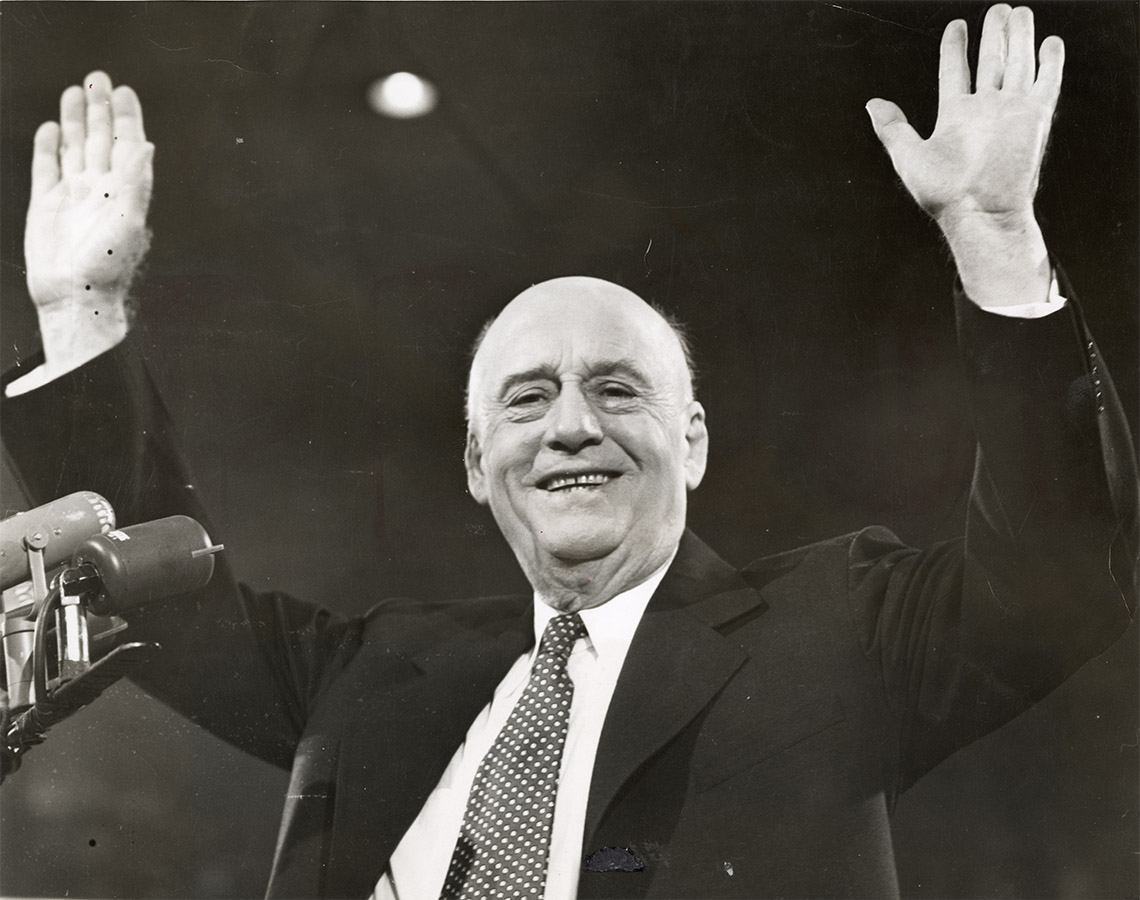
Passing
Rayburn passed away in Bonham on November 16, 1961, and was buried at the Willow Wild Cemetery, a few blocks from the Rayburn Museum, on November 18. Rayburn’s remains laid in state in the museum building for 24 hours. Thousands of mourners, from school children to national officials, filed silently past his bronze coffin in tribute to his service and dedication. The Texas Department of Public Safety estimated 15,000 people filled the streets on the day of Rayburn’s funeral. President John Kennedy, former Presidents Dwight Eisenhower and Harry Truman, and future President Lyndon Johnson attended the funeral services. The entire Texas Congressional delegation and 105 members of Congress attended the services and many came to the museum. Network television provided live coverage of the funeral service from the First Baptist Church in Bonham.
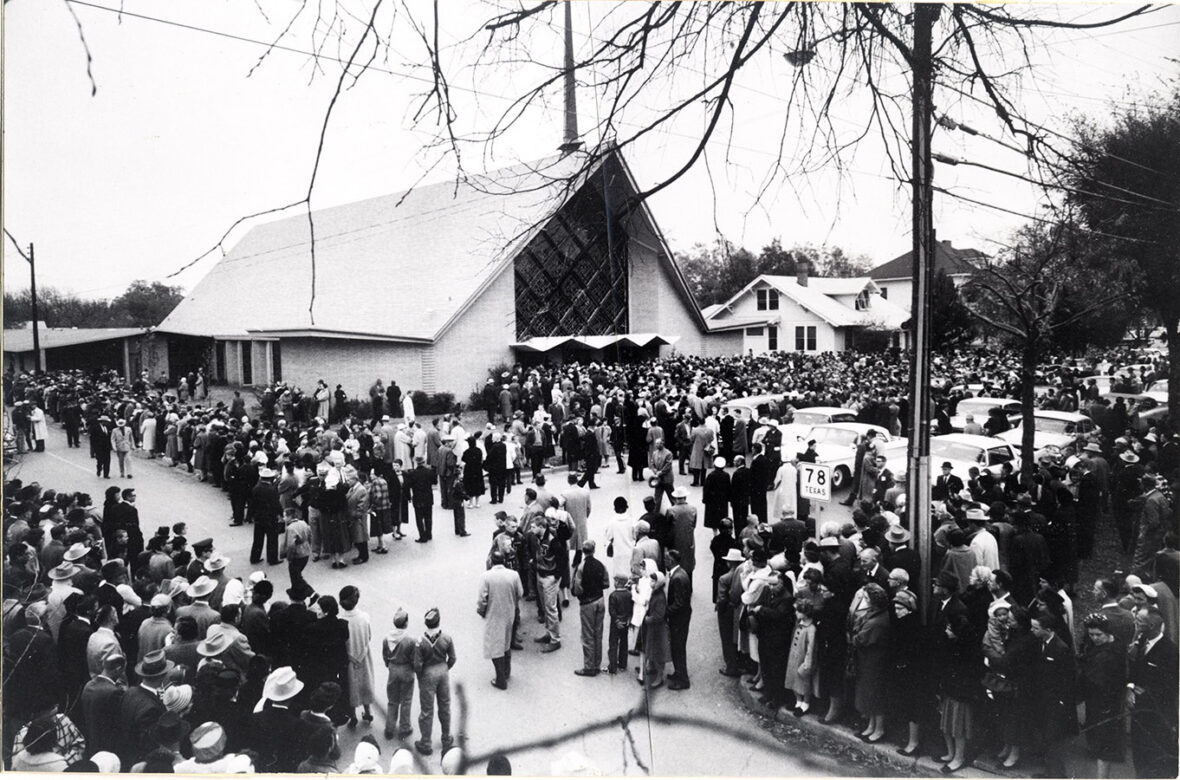
Sam Rayburn accomplished much in his lifetime by the fulfillment of his dream to be a politician, and he is a source of pride for those all over northeast Texas.
Sam Rayburn Papers
Speaker Rayburn’s original papers are part of the center’s congressional and political history collections and are available in the center’s Research and Collections Division located on The University of Texas at Austin campus. A majority of the congressional papers have been microfilmed, as well as number of images and films digitized. The finding aid for the Sam Rayburn Papers can be found here. The Rayburn Papers contains correspondence, speeches, interviews, newspaper clippings, financial records, maps, photographs, and reports that document his political career as well as material from his private life. Noteworthy correspondents include Franklin D. Roosevelt, Harry S. Truman, Dwight D. Eisenhower, Lyndon B. Johnson, John F. Kennedy, Hubert H. Humphrey, Adlai E. Stevenson, and John W. McCormack.
Additional resources on Rayburn can be found at the Biographical Directory of the United States Congress.
Papers of many of Rayburn’s congressional colleagues, such as John Nance Garner, James Buchanan, Maury Maverick Sr., Lloyd Bentsen Jr., Frank Ikard, and Ralph Yarborough, are also available for use in the Briscoe Center’s Research and Collections Division. Also in Austin, adjacent to Sid Richardson Hall, is the Lyndon B. Johnson Library and Museum where additional material related to Rayburn’s political career may be found.
Exhibitions at the Sam Rayburn Museum
Visit the exhibitions at the Sam Rayburn Museum to learn more about Mr. Sam.
The Leadership of Mr. Sam features photographs, original letters, political cartoons, art, furniture, and personal memorabilia relating to the life and political career of Sam Rayburn, the longest serving Speaker of the United States House of Representatives. On view in the Dulaney Gallery is a fireplace mantle originally from the Adams Room of the White House. The Rostrum Gallery holds the Speaker’s rostrum that stood in House of Representatives from 1857 until 1950. The rostrum, removed during renovations to the Capitol Building, was presented to Sam Rayburn for permanent display in this museum. Also, see a replica of the formal office of the Speaker of the House of Representatives, which Speaker Rayburn utilized as an office and meeting place whenever he was in Bonham between sessions of Congress. The Reading Room houses Rayburn’s extensive personal library as well as a display of gifts made to Rayburn in appreciation of his public service.
Publications and films
There were two publications produced while the museum was under the administration of the Sam Rayburn Foundation:
- Speak, Mr. Speaker by H. G. Dulaney, Edward Hake Phillips, and MacPhelan Reese, 1978.
- Impressions of Mr. Sam: A Cartoon Profile by H. G. Dulaney, Edward Hake Phillips, 1987.
The most recent publication about Sam Rayburn is Reflections on Rayburn by James Riddlesperger, Anthony Champagne, and Jim Wright (TCU Press, 2017).
In 2007, the Friends of Sam Rayburn commissioned One Cent Productions to do a short informational video about Rayburn for use at the Sam Rayburn House State Historic Site and the Sam Rayburn Museum.
Sam Rayburn House
The Sam Rayburn House State Historic Site is approximately two miles from the Rayburn Museum. The house compliments the Rayburn Museum in that the house represents his personal life in Fannin County, maintaining a collection of Rayburn’s personal artifacts relating to his family and home life and original furnishings, while the museum focuses on his political legacy. The Texas Historical Commission operates the Rayburn House.
Founded as a not-for-profit organization in 1975 by personal friends of Sam Rayburn, the Friends of Sam Rayburn provides support to the Sam Rayburn House State Historic Site and the Sam Rayburn Museum, including volunteers and other support services when requested.


